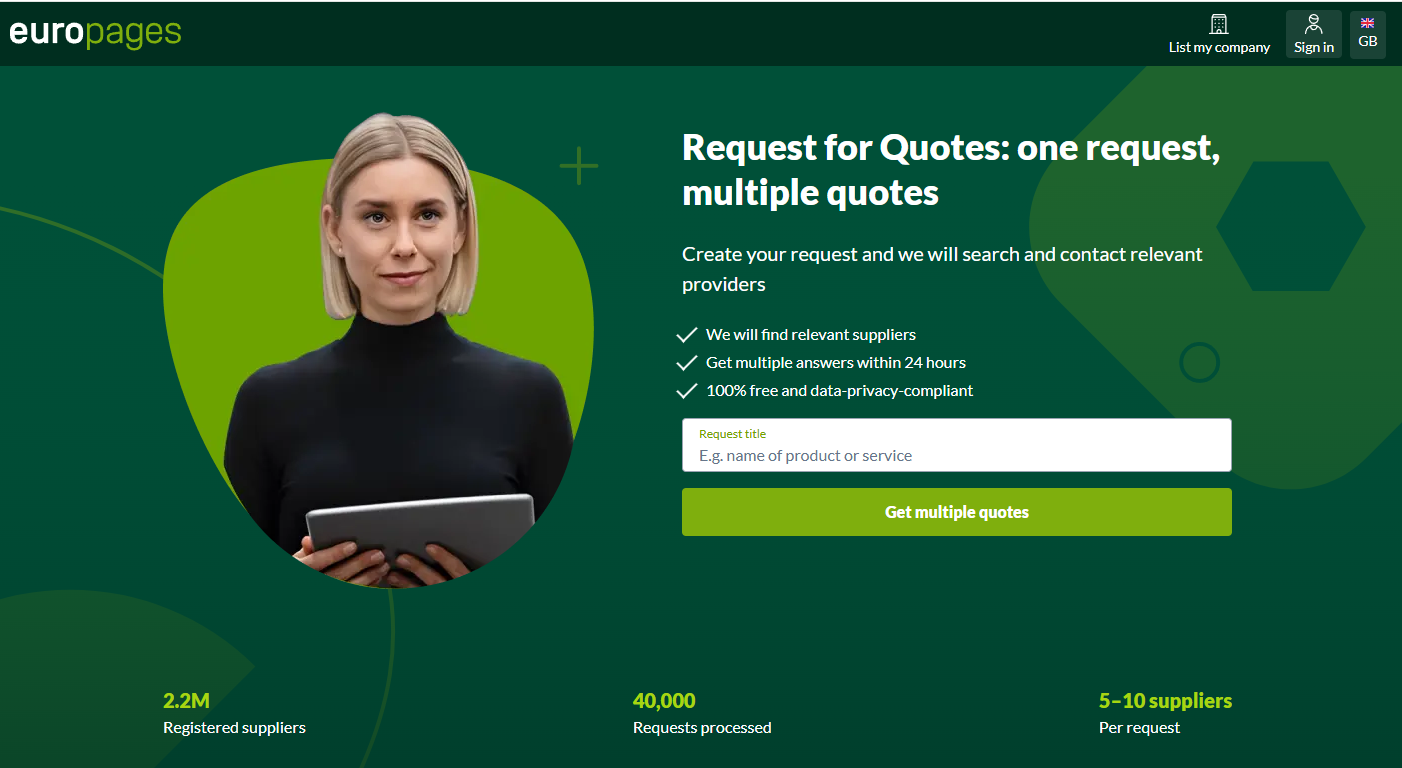Index
- Europe’s Nuclear Comeback
- Grid Stability and Energy Sovereignty
- What Nuclear Energy Means for EU B2B Suppliers and Energy Buyers
- Small Modular Reactors: A Flexible Nuclear Option
- Can Nuclear Stabilize Europe’s Fragile Grids?
- How Geopolitical Uncertainty Pushes Europe’s Nuclear Agenda
1. Europe’s Nuclear Comeback
Recently, countries like France, Finland, Poland, and the Czech Republic have been stepping up their nuclear plans to boost local energy and cut carbon emissions.
In 2022, the European Commission launched the REPowerEU plan, which made nuclear a key part of Europe’s energy mix. Nuclear was then labeled a "transitional" green energy under EU rules.
This shift happened as energy prices were rising and Europe was trying to reduce its dependence on unstable gas markets like Russia.
2. Grid Stability and Energy Sovereignty
Nuclear energy provides a steady, reliable baseload that fluctuating renewables like solar and wind can’t always deliver, making it essential for grid stability. This growing recognition of nuclear’s role is driving a wave of renewed interest and investment across Europe:
France, which already relies on nuclear for about 70% of its electricity, is doubling down with reactor life extensions and plans for new builds.
Poland is investing in its first nuclear reactors to phase out coal.
Finland’s new Olkiluoto 3 reactor is now one of the largest in Europe, providing significant power stability.
And Germany, which closed its last reactors in 2023, is now softening its position, supporting nuclear’s role at the EU level to balance energy security and climate goals.
3. What Nuclear Energy Means for EU B2B Suppliers and Energy Buyers
The nuclear energy comeback is creating new opportunities and challenges for B2B companies across the energy supply chain.
Manufacturers, technology providers, engineering firms, and fuel suppliers will likely see increased demand as nuclear projects gain momentum.
At the same time, building stronger partnerships and diversifying supplier networks will be key to staying resilient and competitive. Businesses will need to adapt to shifting procurement rules, tighter regulations, and ongoing geopolitical risks.

4. Small Modular Reactors: A Flexible Nuclear Option
One of the most promising areas lies in the rise of Small Modular Reactors (SMRs), which are reshaping nuclear procurement strategies across Europe.
The European Commission supports Small Modular Reactors (SMRs) as a faster, more flexible solution. Unlike traditional nuclear plants, SMRs are compact (each unit can produce up to 300 MW), and can be installed closer to where energy is needed, like industrial hubs or remote regions.
Romania is moving ahead with an SMR project that could be operational in the early 2030s. Sweden and Poland are also exploring SMRs to quickly grow their nuclear capacity.
At the same time, a European Industrial Alliance on SMRs is working to speed up development and bring these reactors to market across the continent.
5. Can Nuclear Stabilize Europe’s Fragile Grids?
The recent blackouts in Spain and Portugal showed the limits of grids dominated by intermittent renewables.
Experts warn that most European grid systems are still optimized for fossil fuels, and transitioning too quickly without reliable alternatives could destabilize frequency control.
Nuclear energy, with its large rotating turbines, provides physical inertia that helps grids absorb shocks.
Synthetic inertia technology, currently under trial, aims to stabilize power grids by replicating the natural frequency resistance generated by large spinning turbines in nuclear plants.
However, synthetic inertia is not yet widely deployed at scale. It will take time before it becomes a common part of the energy system.
6. How Geopolitical Uncertainty Pushes Europe’s Nuclear Agenda
As Europe works to cut its dependence on Russian oil and gas, its nuclear sector still relies heavily on its enriched uranium.
According to the World Nuclear Industry Status Report, "As of early 2025, approximately 20% of the EU's nuclear reactors still rely on Russian-supplied fuel” showing that the sector remains dependent on a risky supply source.
The European Commission is now racing to change this. Europe is urgently building new supply chains with countries like Canada, Kazakhstan, and Australia. The Euratom Supply Agency is also stepping up its oversight to prevent future overreliance on a single source.
But the push toward nuclear energy is dividing the EU:
- France, Hungary, and Finland support expanding nuclear power as a solution for energy security and grid stability.
- Austria and Luxembourg remain firmly opposed, citing environmental and safety concerns.
- Germany sits in the middle but still faces strong public resistance.
This division risks creating a patchwork of national strategies, different procurement rules, and uncoordinated investments across Europe.
Conclusion
While nuclear power is already on the rise in Europe, growing global energy uncertainty is accelerating that comeback.
Supply disruptions, shipping bottlenecks, and price shocks caused by geopolitical conflicts are showing how risky it is to depend on a single source for electricity, fuel, or gas.
For SMEs, limited storage capacity and tighter cash flows mean exposure to fuel supply disruptions can hit harder and faster.
Europe’s energy system, supply chains, and fragile grids are under pressure like never before. This wake-up call is pushing EU leaders to rethink their energy strategy here and now.
Stay informed about Europe’s energy and sustainability trends by exploring the latest articles in the europages blog Inside Business.
France Reclaims Energy Leadership with the Discovery of the World’s Largest White Hydrogen Reserve
Supercritical CO2, a New Promise of Effective Recycling
Stop Being Nice to AI: It’s Burning Cash and Carbon
How the Manufacturer of Heat Pumps Can Drive Industrial Decarbonization in the EU

